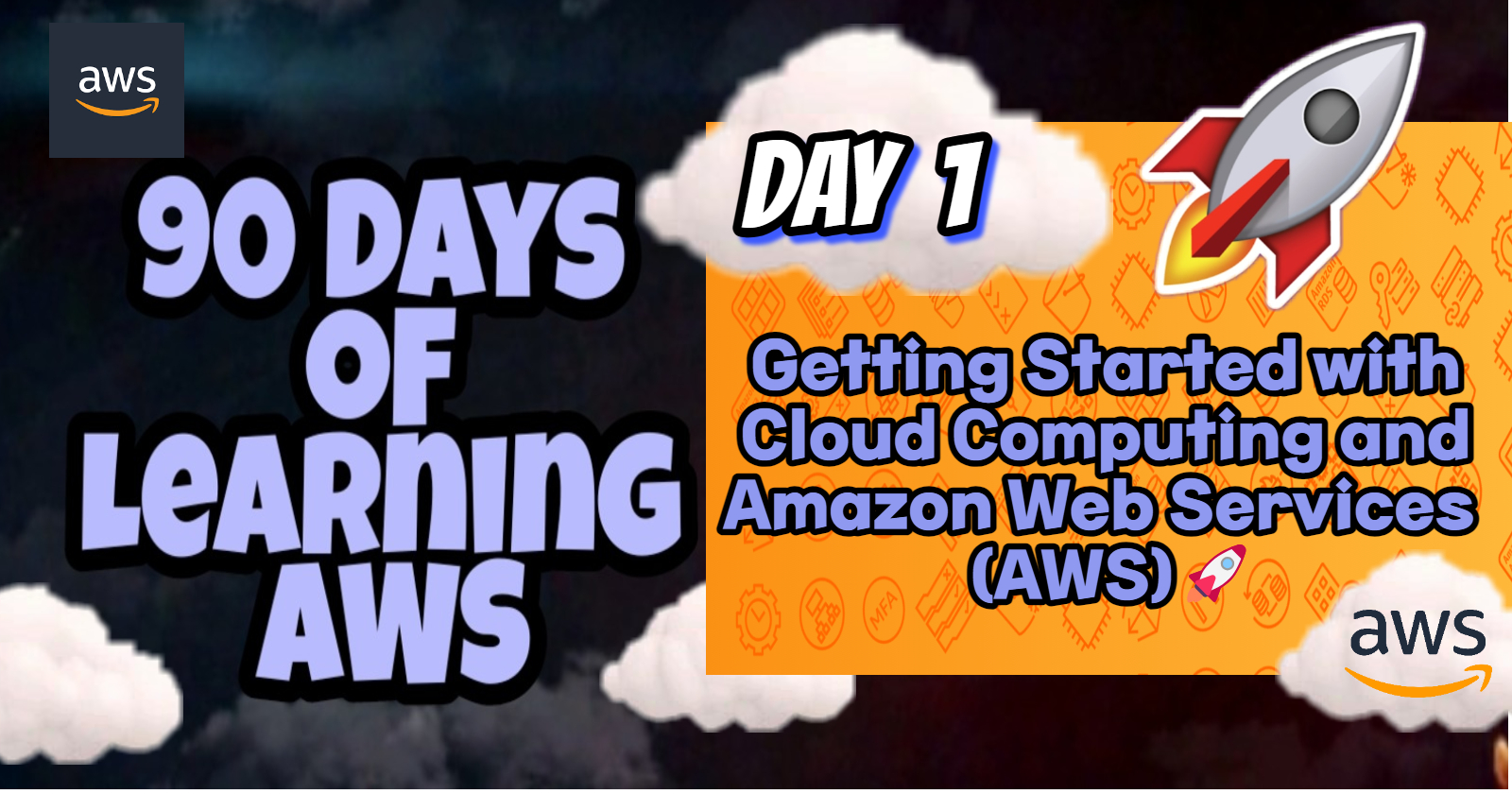Getting Started with Cloud Computing and Amazon Web Services (AWS)🚀
 Shailesh
Shailesh
Introduction🌟
Lets start with understanding the basics of cloud computing! Here, we will learn about Amazon Web Services (AWS), its global infrastructure, and how AWS Regions and Availability Zones provide scalable, secure, and cost-effective solutions for businesses worldwide. Perfect Start!
What is Cloud ?☁
Cloud computing is a technology that lets you store and access data and applications online instead of on a local computer. It provides scalable resources, on-demand services, and cost savings, helping businesses manage and grow their IT infrastructure.
Contrary to its name, the cloud isn't imaginary; it's a collection of physical servers and network infrastructure bundled together, offering virtualized services to users.
Amazon Web Services (AWS)🌐
Amazon Web Services (AWS) is a leading cloud service provider offering a wide range of on-demand computing resources, including storage, databases, analytics, and machine learning. AWS enables businesses to scale efficiently, reduce IT costs, and innovate faster.
AWS named as a Leader in 2023 Gartner Magic Quadrant for Strategic Cloud Platform Services
Use Cases:
Hosting websites
Running enterprise applications
Data storage
Big data processing
Developing AI models
Many prominent companies use AWS cloud services, including:
Netflix: Utilizes AWS for scalable and reliable streaming services, handling massive amounts of video/audio data and user requests.
Airbnb: Leverages AWS to manage its global infrastructure, ensuring availability and reliability for users worldwide.
Spotify: Uses AWS for data storage, processing, and machine learning to enhance music recommendations and user experience.
Pinterest: Uses AWS to manage vast amounts of image data and deliver a seamless user experience globally.
AWS Cloud – Regions and Availability Zones🌏🧭
AWS Regions: AWS has 33 Regionsaround the world. An AWS Region is a physical location in the world where we have multiple Availability Zones.
Availability Zones: In each Region, there are multiple Availability Zones. Availability Zones consist of one or more discrete data centers, each with redundant power, networking, and connectivity, housed in separate facilities Altogether, AWS has 105 Availability Zones globally. These provide redundancy and help keep services running smoothly.
CloudFront POPs: AWS has over 600 CloudFront Points of Presence (POPs). These are locations worldwide that help deliver content faster to users.
Regional Edge Caches: AWS has 13 Regional edge caches. These are like smaller data storage points that help speed up content delivery in specific areas.
This infrastructure ensures that AWS can offer reliable and fast services to users around the world. Regions available worldwide containing multiple Availability Zones allows you to operate production applications and databases that are more highly available, fault-tolerant, and scalable than would be possible from a single data center.
Conclusion💡
Learning about cloud computing and AWS helps businesses grow efficiently. With AWS's vast infrastructure, reliability and scalability are guaranteed for global operations. Additionally, AWS's multiple Availability Zones ensure high availability and fault tolerance, crucial for critical applications.
Subscribe to my newsletter
Read articles from Shailesh directly inside your inbox. Subscribe to the newsletter, and don't miss out.
Written by

Shailesh
Shailesh
As a Solution Architect, I am responsible for designing and implementing scalable, secure, and efficient IT solutions. My key responsibilities include: 🔸Analysing business requirements and translating them into technical solutions. 🔸Developing comprehensive architectural plans to meet organizational goals. 🔸Ensuring seamless integration of new technologies with existing systems. 🔸Overseeing the implementation of projects to ensure alignment with design. 🔸Providing technical leadership and guidance to development teams. 🔸Conducting performance assessments and optimizing solutions for efficiency. 🔸Maintaining a keen focus on security, compliance, and best practices. Actively exploring new technologies and continuously refining strategies to drive innovation and excellence.